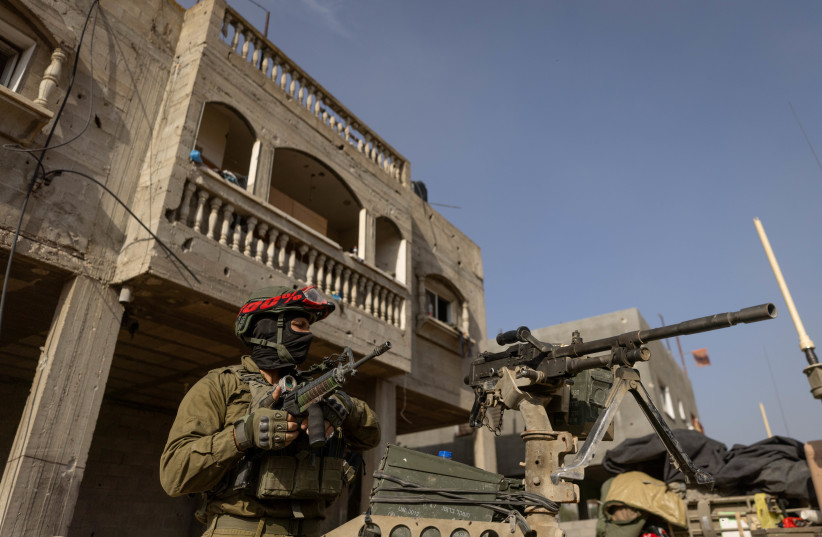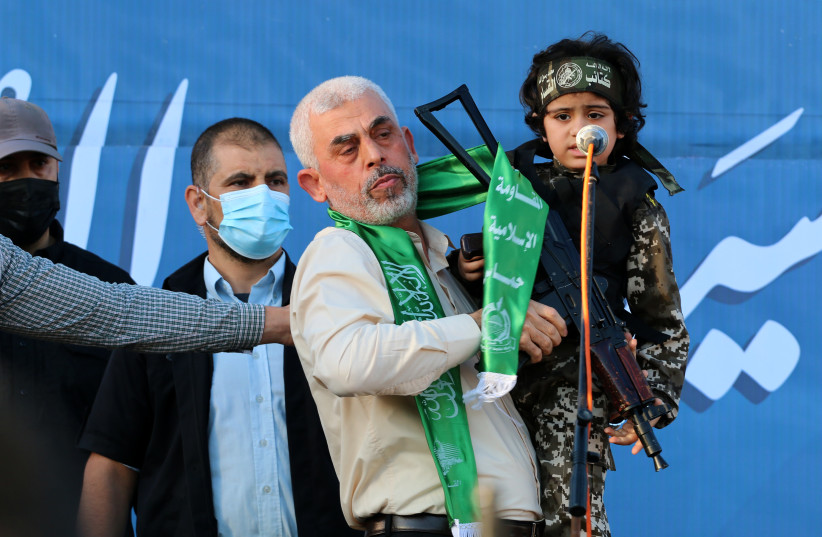IDF Division 162 has finished completely dismantling Hamas’s three battalions of terror forces in the Jabalya area of northern Gaza, killing over 1,000 of Hamas’s forces and arresting 500 terrorists.
Additionally, 3,000 non-combatant individuals associated with Hamas have been arrested. Over 70 of those detained directly participated in the October 7 massacre in southern Israel.
Although by mid-November the IDF had already achieved control over Shati, Beit Hanun, the center of Gaza City and some other areas, IDF operations against Jabalya started later on.
The army was compelled to halt mid-operation by the week-long ceasefire at the end of November, so it took around two-and-a-half weeks more of renewed fighting to both gain control over Jabalya, and to be able to dismantle Hamas’s organized military capabilities.
Three battalions split the defense of Jabalya into zones, because each battalion commander wanted the honor of defending an area viewed as so crucial and central to Hamas’s rule.

It is unclear to the IDF how long it will keep extensive forces deep in Jabalya once Israel moves to “Stage three,” the point where the “main war” is over, but the IDF is expected to continue fighting insurgency for three to nine months longer.
For example, the IDF expects that it will reserve the right and power to penetrate anywhere in the area to immediately deal with any terrorist threat. But this might not mean keeping large forces “in the face” of Palestinian civilians, if the area in general remains stable.
Defense Minister Yoav Gallant on Monday said that different parts of Gaza might transition to “Stage three” at different rates, with some areas starting to rebuild, while others remain in an extended, low-intensity conflict.
Some of this was illustrated by announcements on Tuesday that the IDF destroyed 1,500 Hamas tunnel shafts while there were still huge numbers of tunnels to deal with.
Also, on Monday, the IDF announced that operations in Beit Hanun were complete and that many of Division 252’s many reservists would be able to return home.
Over 57 houses of the 70 Hamas terrorists from Jabalya who were involved in the October 7 massacre have been destroyed by the IDF, and there are plans to destroy the others.
Besides those structures, the IDF is currently destroying 40 structures per day that contain booby traps and Hamas weapons.
IDF takes over two houses connected to Yahya Sinwar
Destroying Hamas’s capabilities in Jabalya included not only fighting, patrolling, and inspecting territory above ground but also profoundly extensive work to dismantle their capabilities underground. Around two full weeks were invested in inspecting and destroying Hamas’s tunnels in Jabalya.
Part of the progress against Hamas’s underground capabilities in Jabalya and in northern Gaza, in general, has been taking control over two houses connected to Hamas's Gaza chief, Yahya Sinwar, both east of Shaati and east of the center of Gaza City.
One of the houses was also connected to Sinwar’s daughter.

The house notably had tunnels connecting it to Hamas’s military headquarters, to Shifa Hospital, and to a mosque which Hamas used extensively for terror operations.
Some IDF officials confessed to being surprised at how advanced and extensive the underground networks were, even though IDF intelligence has known about Hamas’s heavy investment in tunnels for years.
According to some Hamas forces who surrendered to the IDF, part of what convinced them to surrender was being attacked from five different directions at once.
Some of them said they viewed the Israeli onslaught as a sign that the IDF was crazy, noting they had not imagined the intensity of the attack. They also expressed anger at Sinwar for having abandoned them and were just desperate for food and water at any cost.
Similar to the videos of the surrenders which were circulated on social media, IDF sources described moments of surrender as large numbers of Hamas forces emerged from their positions all at once with their hands raised.
One of the next missions of Division 162 will involve achieving control over the areas of Daraj and Tuffah, which are said to be the last and small remaining areas of northern Gaza which the IDF has still not engaged with much.
Daraj and Tuffah are also the only areas in northern Gaza which are still able to consistently fire rockets, with most rockets fired on Israel now coming from Rafah in deep southern Gaza.
There is still heavy fighting in Shejaia, another northern Gaza area, but the IDF has been at work there for over two weeks and has already made significant progress.
Tuesday did see a spike in rocket fire, with sirens sounding across the Tel Aviv and central Israel regions in the biggest rocket barrage the region has seen in several days.
Estimates were Hamas cannot and will not be able to keep up a pace of such rocket barrages, but was trying to escalate pressure on the Israeli home front as negotiations over the hostage issue take over the headlines.
In a separate incident, the IDF will open an “in-depth investigation” after a video on social media showed an IDF tank nearly shelling a soldier who appears to be standing in the line of fire, the army said in a statement Tuesday.
“The incident seen in the video is serious and completely deviates from the IDF’s safety instructions,” the statement says. “There will be an in-depth investigation, and penalties will be imposed. There were no casualties in the incident.”
However, Sgt.-Maj. (res.) Daniel Yacov Ben Harosh, 31, from Alon, fell in battle in the northern Gaza Strip.
Capt. (res.) Rotem Yoseff Levy, 24, from Oranit, fell in battle in the northern Gaza Strip.
Sgt.-Maj. (res.) Maoz Fenigstein, 25, from Susya, fell in battle in the northern Gaza Strip, the IDF Spokesperson’s Unit said on Tuesday evening. Fenigstein served in the 7008th Battalion of the 551st Brigade.
In the North, the IDF struck sites belonging to Hezbollah in southern Lebanon on Tuesday afternoon, including weapons storage sites and rocket launchers, after a series of drone infiltrations and rocket launches from Lebanon throughout the day.
Amid the exchanges of fire, the Israeli Air Force struck a terrorist cell near the Lebanese border across from Hanita. IDF tank fire also targeted several Hezbollah sites in southern Lebanon and fired at a threat close to the border near Yir’on in northern Israel.
According to the Lebanese LBCI news, one of the Israeli strikes targeted a site belonging to the Green Without Borders organization, an environmental organization used as a front by Hezbollah to place terrorist infrastructure near the border.
Several drone infiltration alerts sounded in northern Israel on Tuesday, with the IDF intercepting at least two suspicious objects over the Lebanese-Israeli border throughout the day. One drone was intercepted near Emek Hahula and another was intercepted near Nir’s Cliff on Tuesday afternoon.
Additionally, several rockets were fired from Lebanon toward northern Israel throughout the day.
On Tuesday afternoon, Hezbollah announced that one of its members had been killed in the exchanges of fire between it and Israel, bringing the total number of Hezbollah terrorists confirmed killed since October 8 to about 112.
In reference to the rising tensions between Israel and Hezbollah, IDF spokesperson Jonathan Conricus stressed on Monday that “we are closer today to war than we were yesterday,” warning that Hezbollah is “playing a very, very dangerous game.”
French Foreign Minister Catherine Colonna warned during a visit to Beirut on Monday that an expansion of the conflict between Hezbollah and Israel would “not benefit anyone, and will only increase the risks and distance everyone from security and peace.”
Colonna stressed that “if Lebanon is plunged into war, it will not recover.”
“I bring a message to those outside Lebanon who are waiting to take advantage of the disastrous situation in Gaza to increase tensions, and I mean Iran and all its tools in Iraq and Syria, and also what the Houthis are doing in the Red Sea. This is a big mistake and a very dangerous matter, and the escalation must be stopped,” said the French foreign minister.
Jerusalem Post Staff contributed to this report.
